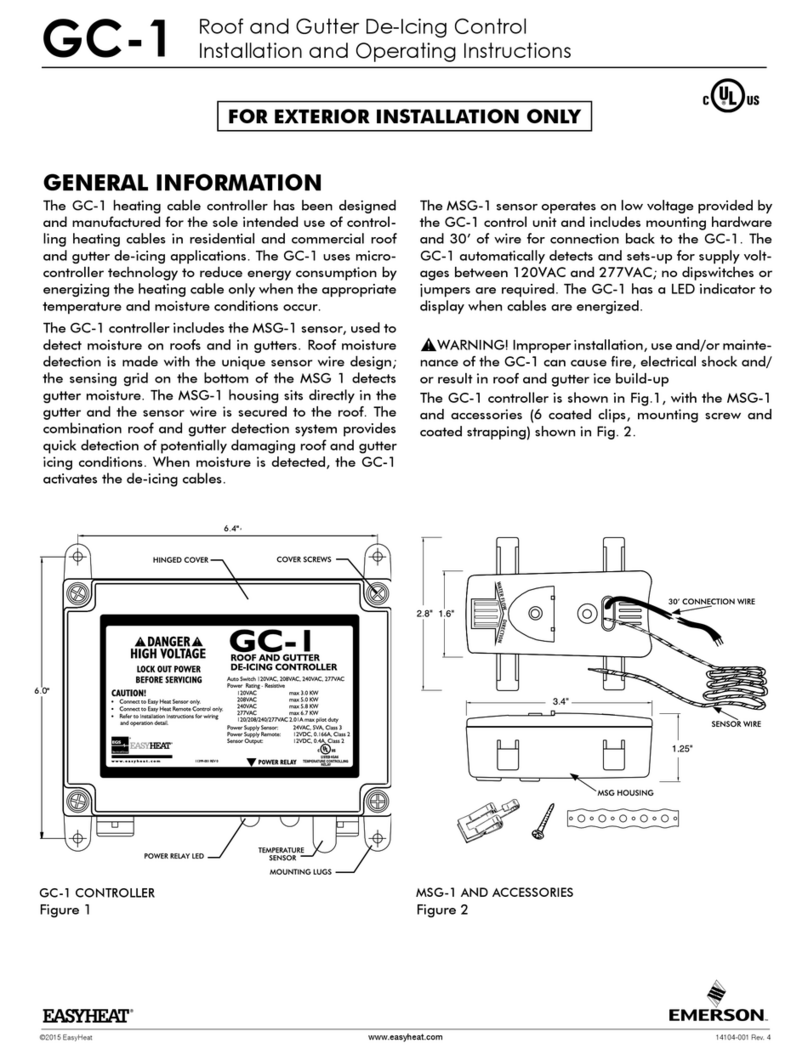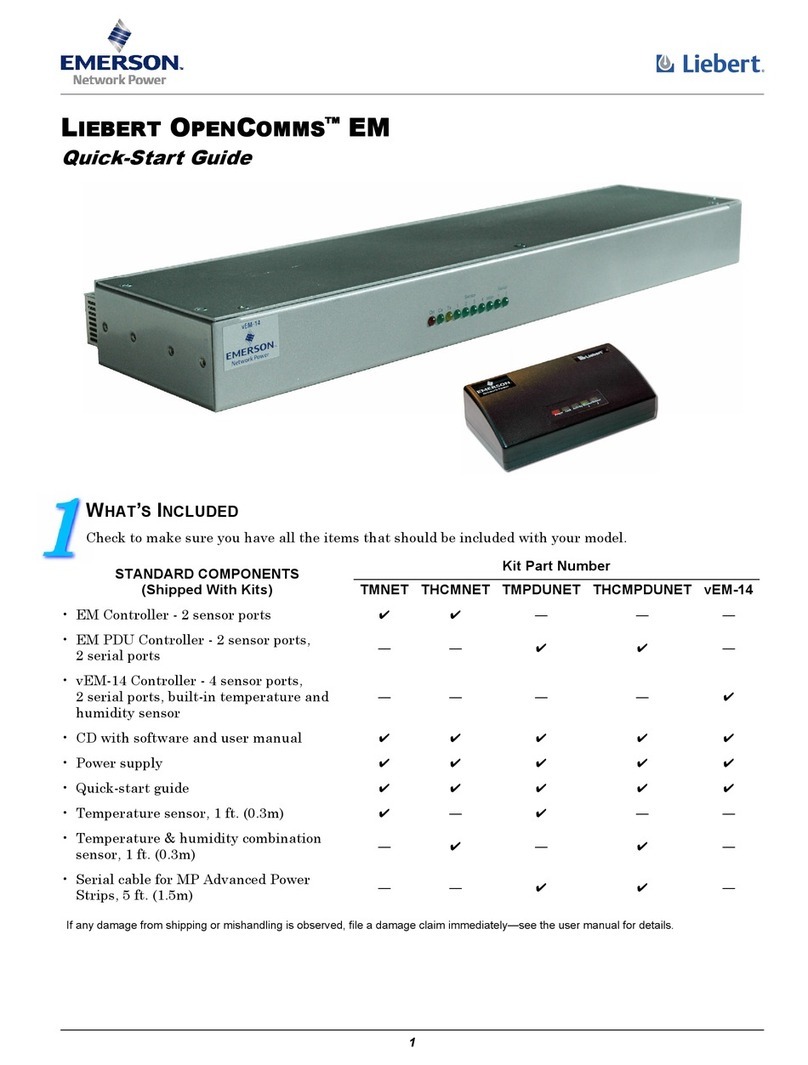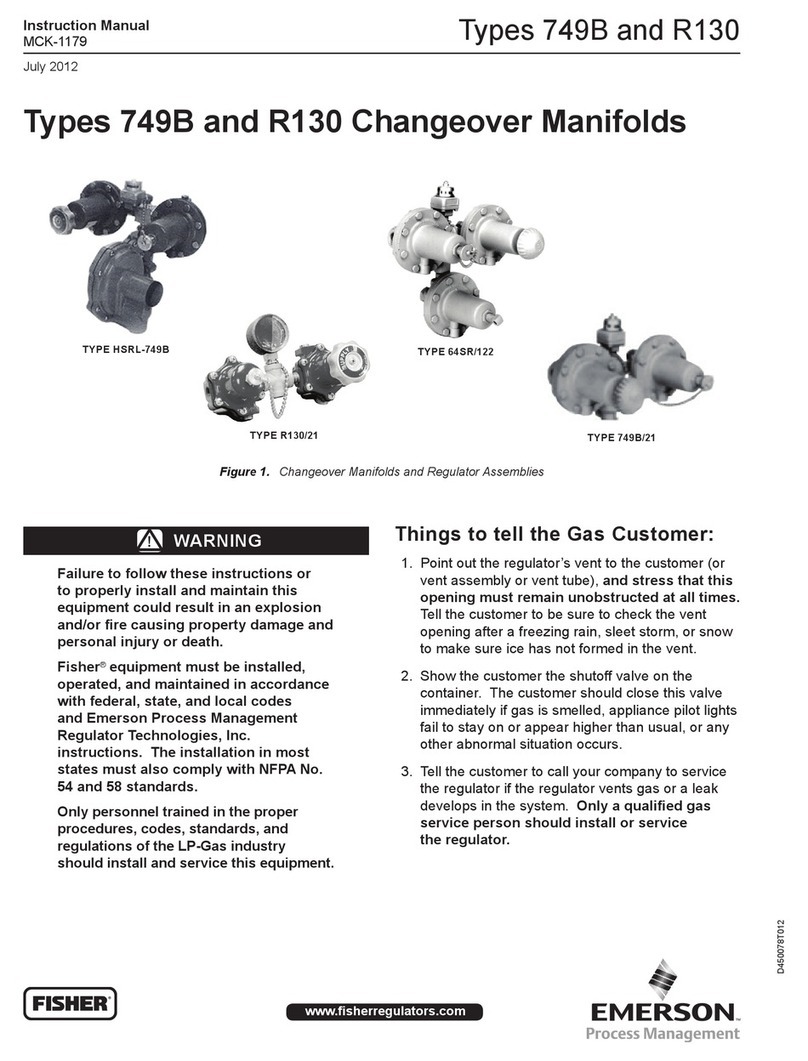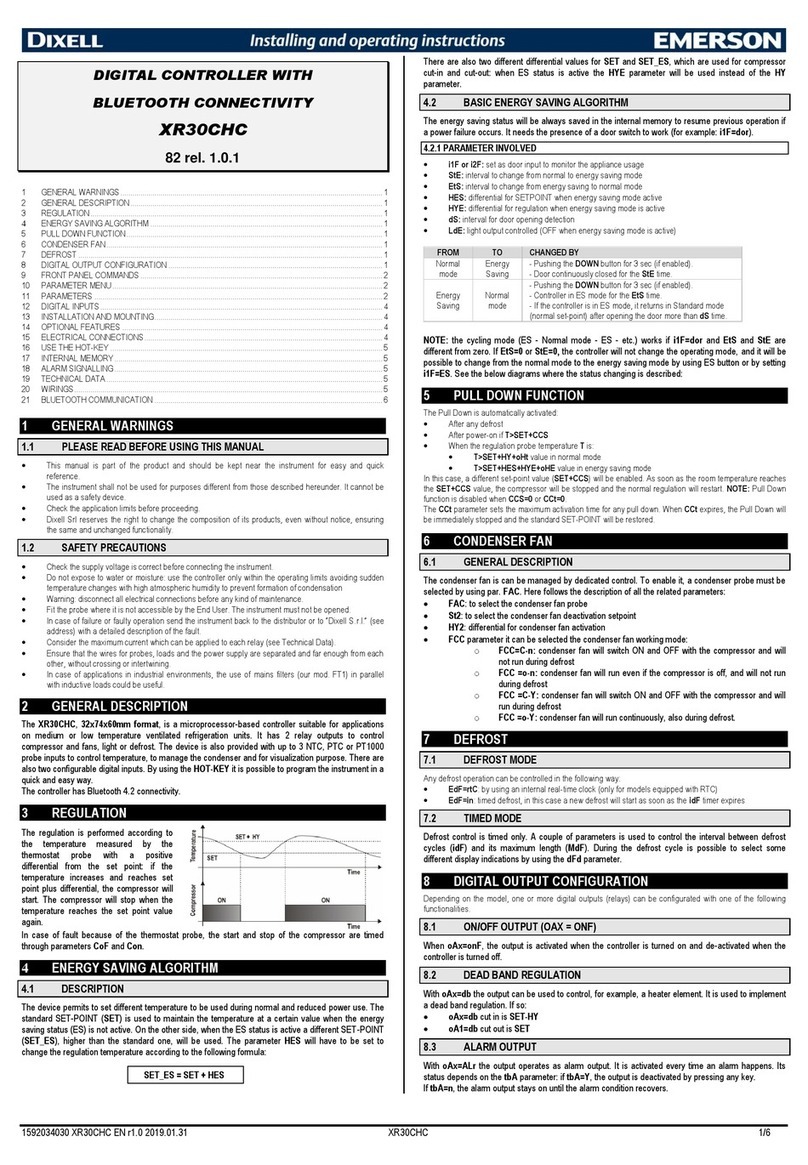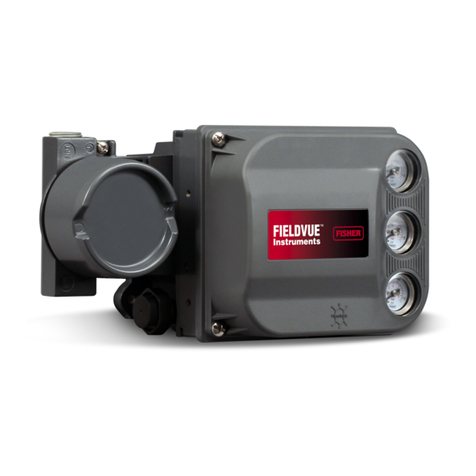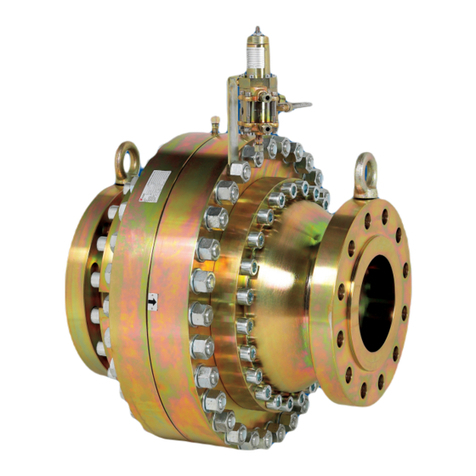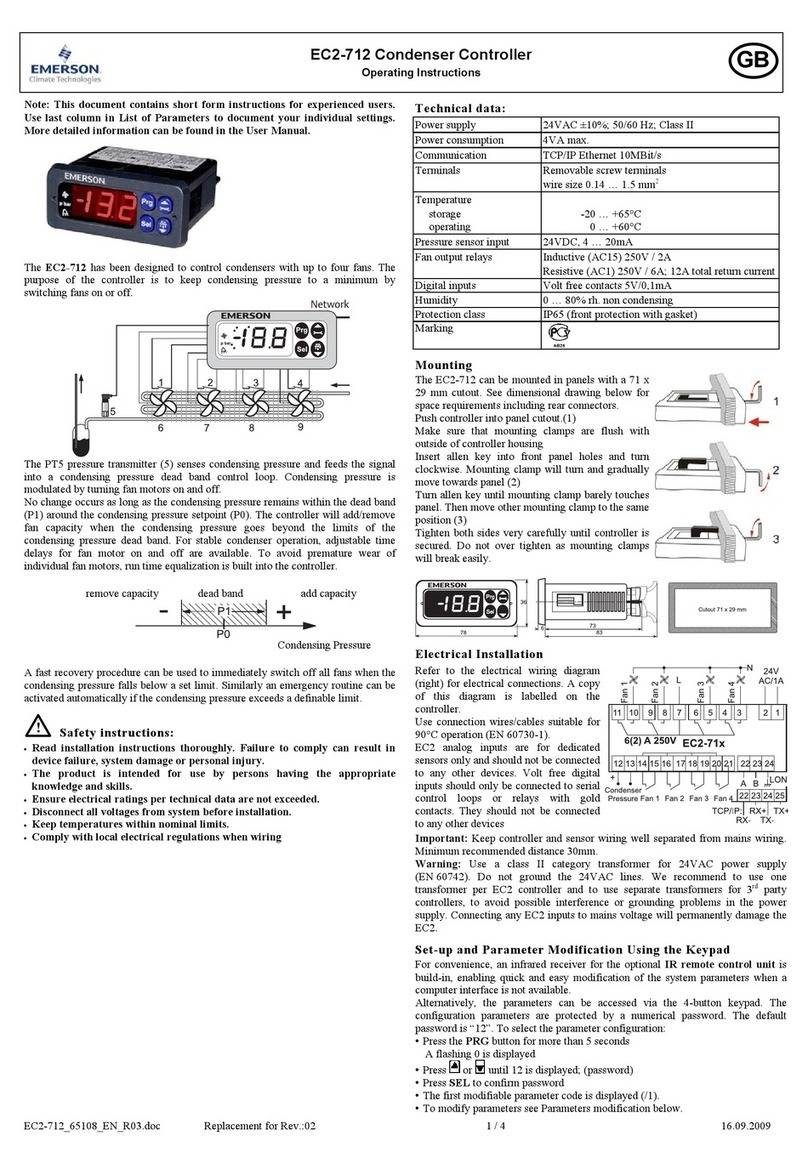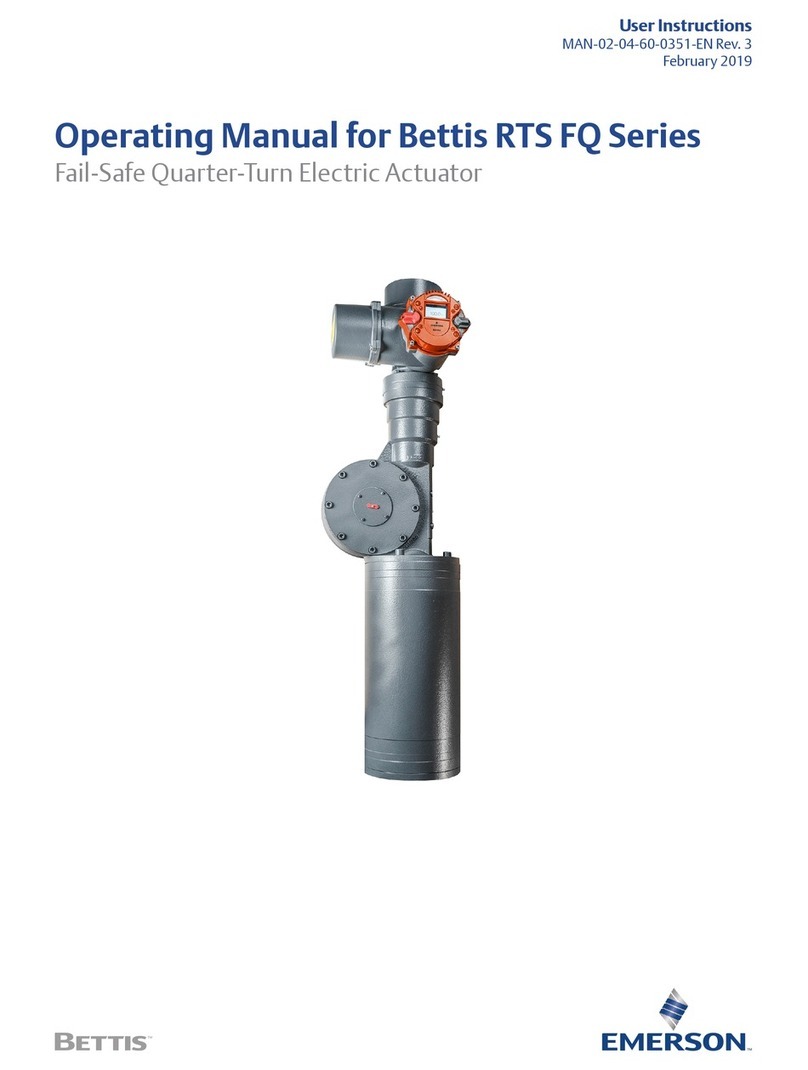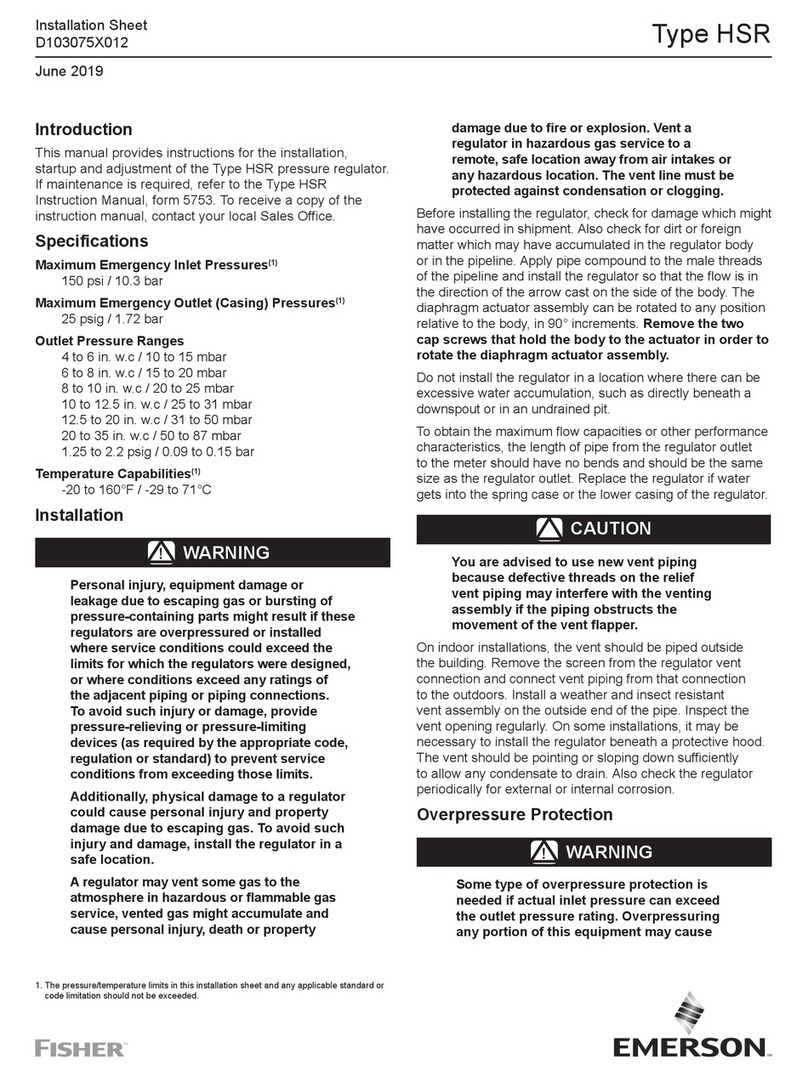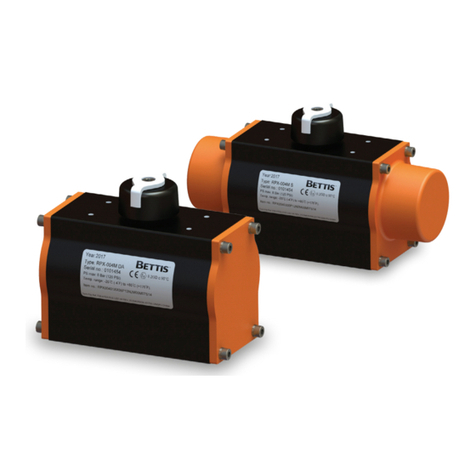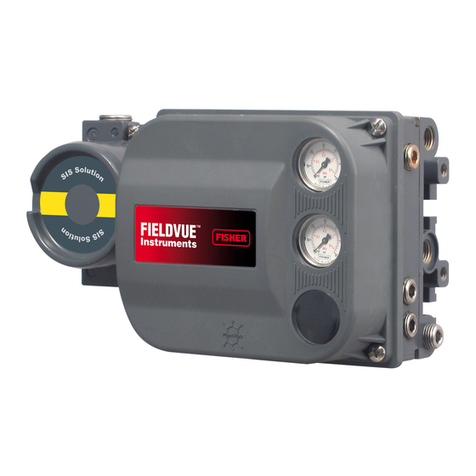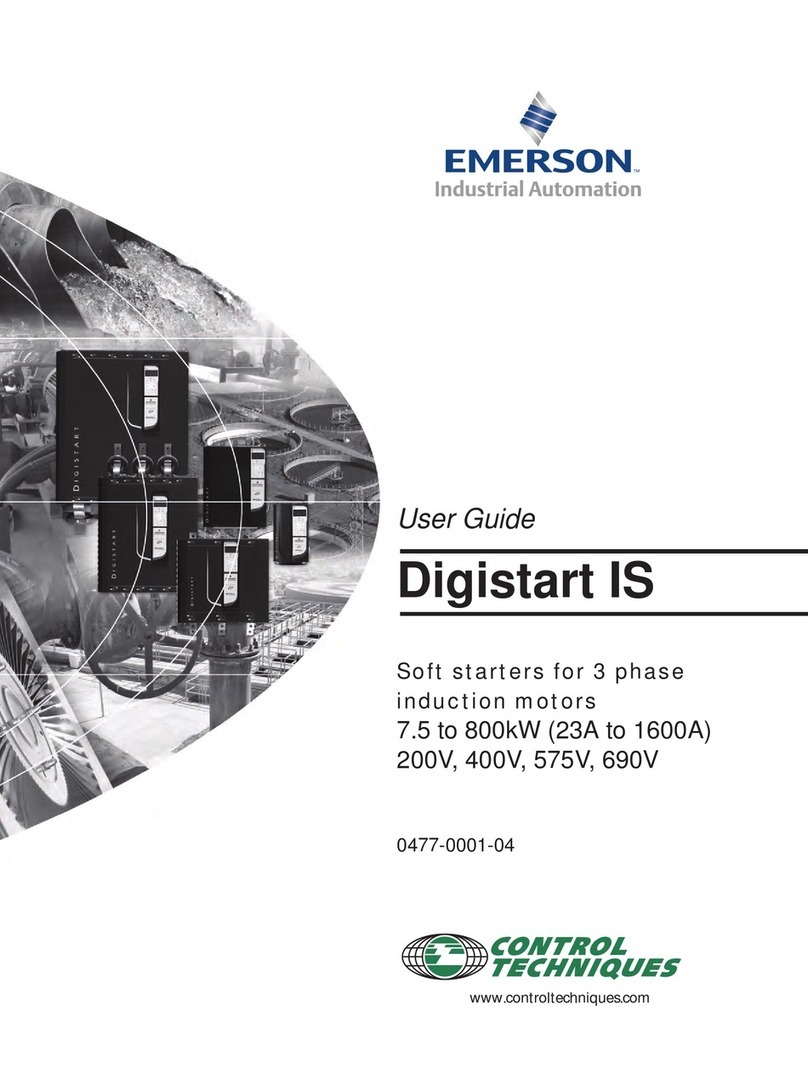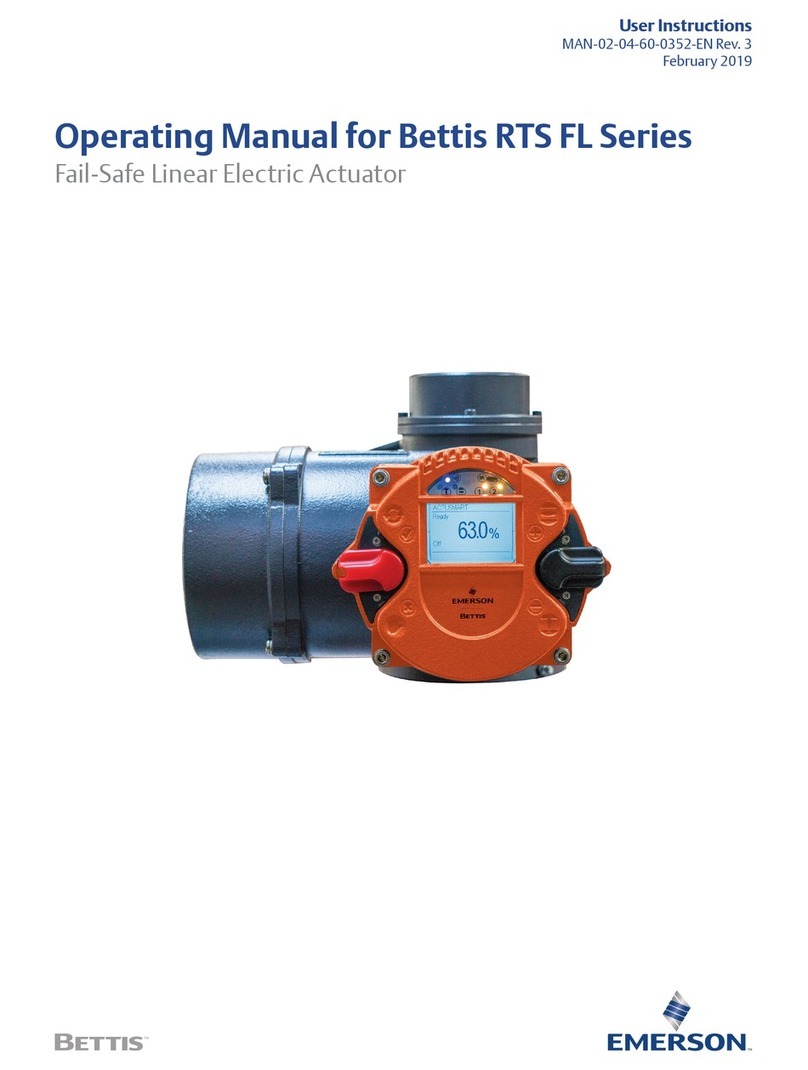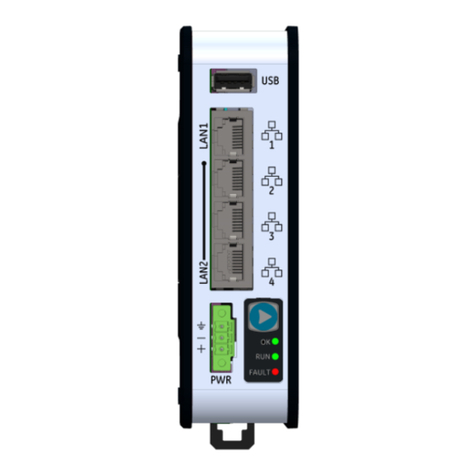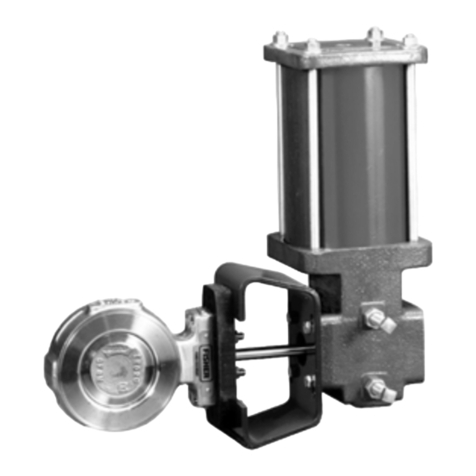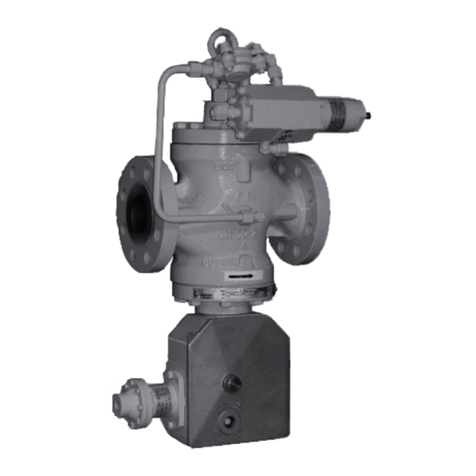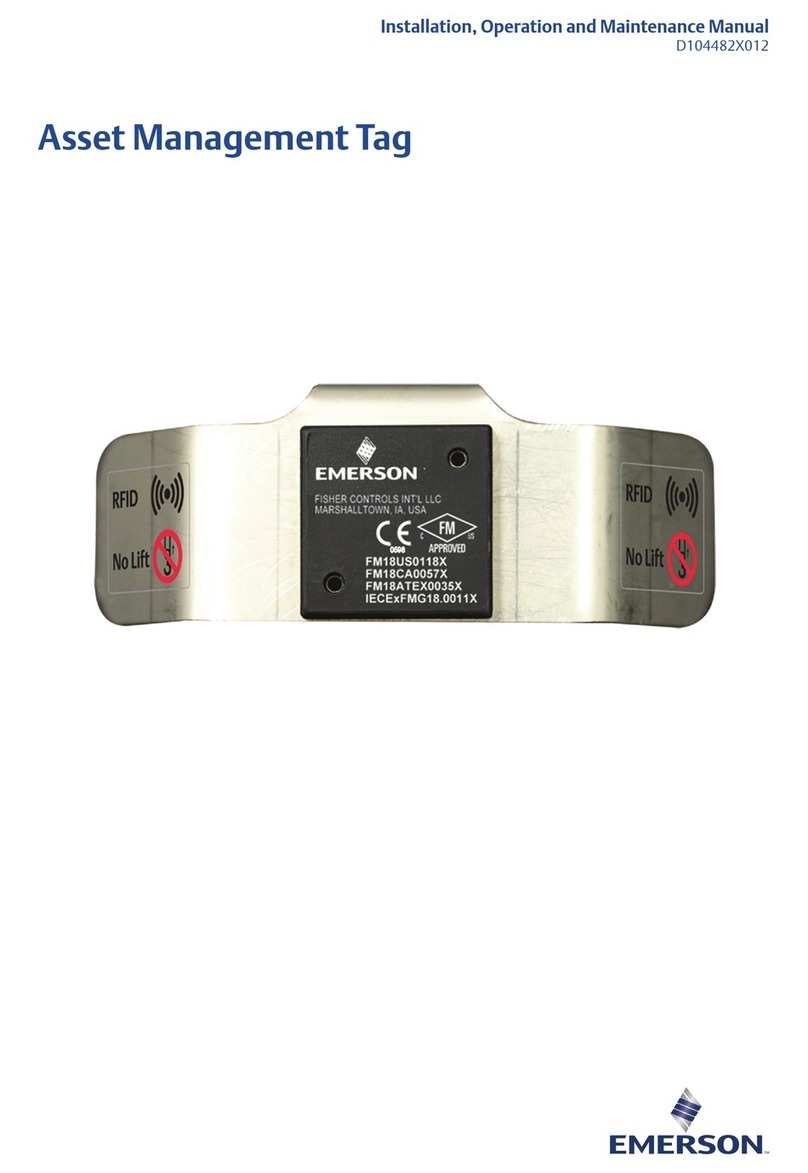
MR98 Series
3
Installation
▲ WARNING
Only qualied personnel shall install or
service a relief valve or backpressure
regulator. Relief valve or backpressure
regulator should be installed, operated
and maintained in accordance with
international and applicable codes
and regulations and Emerson Process
Management Regulator Technologies,
Inc. instructions.
If using a relief valve or backpressure
regulator on a hazardous or ammable
uid service, personal injury and
property damage could occur due to re
or explosion of vented uid that may
have accumulated. To prevent such
injury or damage, provide piping or
tubing to vent the uid to a safe, well-
ventilated area or containment vessel.
Also, when venting a hazardous uid,
the piping or tubing should be located
far enough away from any buildings
or windows so to not create a further
hazard and the vent opening should be
protected against anything that could
clog it.
Personal injury, equipment damage
or leakage due to escaping uid
or bursting of pressure-containing
parts may result if this relief valve or
backpressure regulator is overpressured
or is installed where service conditions
could exceed the limits given in
the Specications section or where
conditions exceed any ratings of the
adjacent piping or piping connections.
To avoid such injury or damage, provide
pressure-relieving or pressure-limiting
devices (as required by the appropriate
code, regulation or standard) to prevent
service conditions from exceeding limits.
Additionally, physical damage to the
relief valve or backpressure regulator
could result in personal injury and
property damage due to escaping uid.
To avoid such injury and damage,
install the relief valve or backpressure
regulator in a safe location.
Clean out all pipelines before installation of the relief
valve or backpressure regulator and check to be sure
the relief valve or backpressure regulator has not been
damaged or has collected foreign material during
shipping. For NPT bodies, apply pipe compound to
the external pipe threads. For anged bodies, use
suitable line gaskets and approved piping and bolting
practices. Install the relief valve or backpressure
regulator in any position desired, unless otherwise
specied, but be sure ow through the body is in the
direction indicated by the arrow on the body.
Table 2. Maximum Cold Working Pressures of Body Size and Materials(1)(2)
REGULATOR
TYPE
BODY SIZE BODY AND SPRING CASE MATERIAL
MAXIMUM
INLET PRESSURE(3)
MAXIMUM OUTLET
PRESSURE
MAXIMUM SPRING
CASE PRESSURE
DN In. bar psig bar psig bar psig
MR98L/
MR98LD
- - - -
15, 20, 25
1/4
1/2, 3/4, 1
Gray Cast Iron 4.1 60 4.1 60 3.4 50
Steel(4); Stainless Steel(4); Monel®(5);
Hastelloy® C(5) 10.3 150 10.3 150 8.6 125
MR98H/
MR98HD
- - - -
15, 20, 25,
40, 50
1/4,
1/2, 3/4, 1,
1-1/2, 2
Gray Cast Iron 20.7 300 20.7 300 17.2 250
Steel(4); Stainless Steel(4); Monel®(5);
Hastelloy® C(5); Aluminum-Bronze(5) 20.7 300 20.7 300 20.7 300
MR98HDP(6)
- - - -
15, 20, 25,
40, 50
1/4,
1/2, 3/4, 1,
1-1/2, 2
Steel(4) 41.4 600 41.4 600 41.4 600
Stainless Steel(4); Monel®(5); Hastelloy® C(5);
Aluminum-Bronze(5) 37.9 550 37.9 550 37.9 550
MR98HH/
MR98HHD(6)
- - - -
15, 20, 25
1/4,
1/2, 3/4, 1
Steel(4); Stainless Steel(4); Monel®(5);
Hastelloy® C(5); Aluminum-Bronze(5) 27.6 400 27.6 400 27.6 400
1. The pressure/temperature limits in this Installation Guide and any applicable standard limitation should not be exceeded.
2. Temperature, trim material and/or the body end connection may decrease these maximum pressures.
3. Maximum inlet pressure equals set pressure plus build-up.
4. Steel and stainless steel body and spring case constructions meet API 614 requirments with SST trim.
5. Not available for 1/4 NPT body size.
6. Maximum dierential pressure between inlet pressure and loading pressure should never exceed 20.7 bar / 300 psig.
Monel® is a mark owned by Special Metals Corporation.
Hastelloy® C is a mark owned by Haynes International, Inc.
